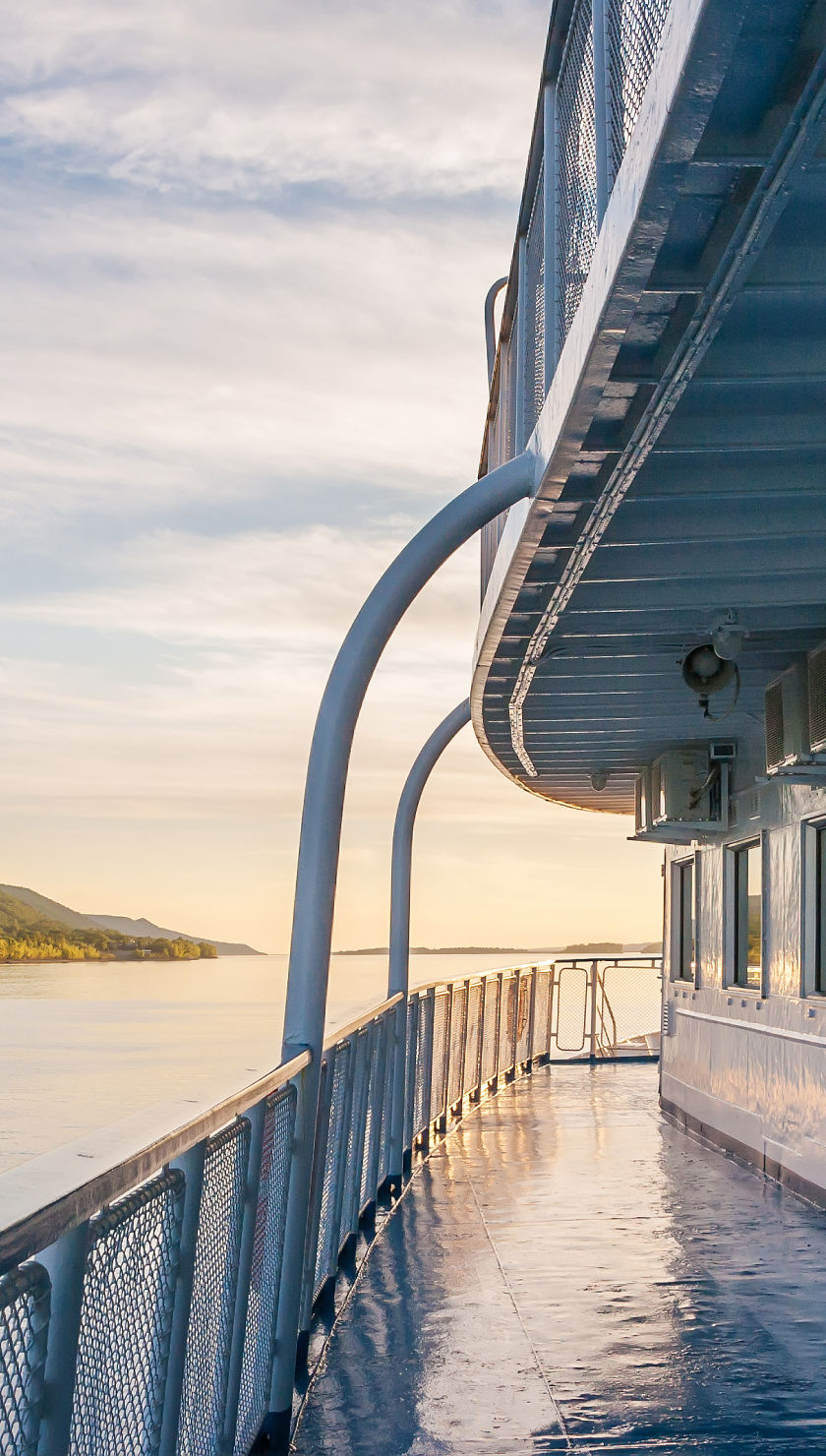Drift Through History: A Danube Cruise Adventure
Let the currents carry you to some of Europe's most captivating destinations. Many of the most popular Danube itineraries will focus on a trio of imperial powerhouses, each offering a unique perspective on this vital waterway:
Bavarian Charm and Historic Towns
Danube cruise trips begin (or terminate) in Germany's Black Forest, and while journeys along the river typically embark further downstream, the German portion of the river holds its magic. Passau, known as the "City of Three Rivers" (where the Danube, Inn, and Ilz converge), boasts a stunning baroque old town and the impressive St. Stephen's Cathedral, home to one of the world's largest organs. Further up the river, consider an optional pre- or post-cruise extension to explore Regensburg, a remarkably well-preserved medieval city and a UNESCO World Heritage site. Its Stone Bridge, a marvel of medieval engineering, has spanned the Danube for over 800 years. Experience the Gemütlichkeit (coziness) of a traditional Bavarian beer garden, sample local sausages, and soak in the atmosphere of a region steeped in history.
+Highlights: St. Stephen's Cathedral and Veste Oberhaus, both in Passau.
Hungarian Bridges and Thermal Baths
Budapest, the "Pearl of the Danube," is often the highlight for many people, and it's easy to see why. This animated capital comprises two cities, Buda and Pest, straddling the river and connected by iconic bridges. Explore the historic Castle District in Buda, with its breathtaking Matthias Church and Fisherman's Bastion offering panoramic views. In Pest, immerse yourself in the grandeur of the Hungarian Parliament Building, stroll along Andrássy Avenue, and experience the city's thriving thermal bath culture. Beyond Budapest, the Danube Bend offers charming towns like Szentendre, an artists' haven known for its colorful houses and cobblestone streets. Experience the warmth of Hungarian hospitality, savor delicious goulash, and be captivated by the haunting melodies of traditional folk music.
+Highlights: Hungarian Parliament Building, Buda Castle, visiting one of the many thermal baths - all in Budapest
Waltz Through Austria's Imperial History
Synonymous with the Danube River is, of course, Austria. This is the land of Mozart, Strauss, and the Habsburg dynasty, and their legacy is palpable along the riverbanks. The "City of Music," Vienna, demands exploration. Lose yourself in the opulence of Schönbrunn Palace, the summer residence of the Habsburg emperors. Attend a classical concert, wander through the magnificent Hofburg Palace, and indulge in a slice of Sachertorte at a traditional Viennese café. Further along, the Wachau Valley unfolds. It is a UNESCO World Heritage site famed for its terraced vineyards, apricot orchards, and charming villages like Dürnstein, where Richard the Lionheart was once held captive. The magnificent Melk Abbey, a baroque masterpiece perched high above the river, is a must-see, a testament to Austria's rich religious and architectural history.
+Highlights: the Hofburg Palace and the State Opera in Vienna, the Abbey in Melk, and the captivating region of the Wachau Valley
The Rhythm of The Balkan
Moving further along, a Danube cruise adventure will carry you to perhaps lesser-known but equally fascinating corners of Europe, such as the beautiful country of Slovakia. Its capital, Bratislava, presents a charming blend of medieval and modern, with its picturesque Old Town, imposing castle, and quirky street art. Enjoy exploring the unique architecture and vibrant nightlife of this often-overlooked gem. Then there's Croatia; while known primarily for its stunning coastline, it also shares a portion of the Danube. Visit Vukovar, a city with a poignant history, a symbol of resilience and rebuilding, and a key location during more modern, turbulent times. The Danube also forms a significant part of Serbia's northern border. Belgrade, the "White City," is the capital at the confluence of the Danube and Sava rivers. Explore the Kalemegdan Fortress, a historical landmark offering panoramic views, and experience the city's energetic nightlife and cafe culture.
+Highlights: Bratislava Castle, Kalemegdan Fortress (Belgrade), the city of Vukovar (Croatia),
Romania & Bulgaria: The Danube's Wild Frontier
The Lower Danube forms a natural border between Romania and Bulgaria, a region of wild beauty and fascinating contrasts. Romania boasts the dramatic Iron Gates on the northern bank, a series of breathtaking gorges. Explore ancient Roman ruins and immerse yourself in the legends of Transylvania. Bulgaria offers a glimpse into a rich cultural heritage on the southern bank. Explore cities and small towns of the Vidin or Ruse regions and sample delicious Bulgarian wines. The riverfront city of Ruse, often referred to as "Little Vienna," features elegant neo-Baroque and neo-Rococo architecture.
+Highlights: The Iron Gates (Romania) and Ruse (Bulgaria)
Find the Danube River Cruise Tour That's Right for You
The Danube River offers various cruise options, from short getaways exploring the heart of Austria and Hungary to epic voyages that traverse the entire continent. Choosing the right itinerary depends on your available time, interests, and budget. Let's explore some of the most popular Danube River cruise routes, highlighting the key destinations and experiences each one offers.
Unforgettable Moments on a Short Danube Cruise (4-7 days)
- Passau (Germany) to Budapest (Hungary): This is probably the most popular and classic Danube segment. It focuses on the "Imperial Trio" of Germany, Austria, and Hungary. It typically includes Passau, Linz (often with an excursion to Salzburg), Melk, Dürnstein, Vienna, and Budapest. Some variations might include Bratislava, Slovakia. This is an excellent option for a first-time river cruise or for those with limited time. It's the "heart" of the Danube experience.
- Vienna (Austria) to Budapest (Hungary): A slightly shorter version of the above, focusing primarily on the Austrian and Hungarian portions of the Danube. This is ideal for those who want to explore these two capitals and the Wachau Valley deeply.
- Budapest Round Trip (with Danube Bend): These cruises focus on Hungary, traveling up the Danube Bend to Esztergom (with its impressive basilica) and Visegrád(with its medieval citadel), and often including the artists village of Szentendre. They offer a deeper dive into Hungarian culture and scenery.
Iconic Cities and Charming Villages on a Danube River Adventure (8-10 days)
- Passau (Germany) to Bucharest (Romania): This itinerary expands on the classic Passau-Budapest route, continuing eastward through Slovakia, Croatia, Serbia, Bulgaria, and Romania. It offers a more comprehensive view of the Danube's diverse landscapes and cultures, including the Iron Gates gorges. It might involve a transfer (bus or flight) between Bucharest and the Danube port city of Giurgiu or Oltenita in Romania.
- Nuremberg (Germany) to Budapest (Hungary): These cruises utilize the Main-Danube Canal, connecting the Rhine and Danube river systems. They typically start or end in Nuremberg (a city of significant historical importance) and include Regensburg and Passau in Germany before continuing along the classic Danube route to Budapest. This is a popular option as it often provides an embarkation or disembarkation point further west than Passau.
- Vienna to the Iron Gates and back: Most of the time, these trips start and end in Vienna, concentrating on the section of the Danube River east of the Austrian capital. They reach at least the Iron Gates and stop in the most relevant cities between those two points.
A Comprehensive Danube River Exploration of its Diverse Landscapes and Cultures (11+ days)
- Amsterdam (Netherlands) to Bucharest (Romania): These are the "grand" Danube cruises, often marketed as "European River Cruises." They traverse multiple rivers (the Rhine, Main, and Danube) and canals, offering a comprehensive journey across a large swath of Europe. They are a significant time commitment, but provide an incredibly in-depth experience.
- Vilshofen (Germany) to Bucharest (Romania): Vilshofen is a small town near Passau, and many longer cruises start or end here. It is similar to the Passau to Bucharest route but often has a slightly more extended itinerary, sometimes including an additional German city.
Specialty Cruises on the Danube
- Christmas Market cruises: Step into a winter wonderland on a Danube Christmas Market cruise. Imagine yourself wandering through charming, snow-dusted stalls, the air filled with the scent of roasted chestnuts and spiced Glühwein. From the iconic Christkindlmarkt in Nuremberg to the magical markets of Vienna and Budapest, you'll discover unique handcrafted gifts and sparkling ornaments and experience centuries-old traditions. These cruises offer a festive and immersive journey into the heart of the European Christmas spirit, combining the joy of discovery with the cozy comfort of a luxurious river ship. It is a perfect pre-holiday escape.
- New Year's Eve cruises: Ring in the New Year with unparalleled style on a Danube New Year's Eve cruise. Celebrate grandly as you glide along this iconic river, enjoying gala dinners, live music, and spectacular fireworks displays. Experience the unique New Year's traditions of historic cities like Vienna or Budapest, joining in the local festivities or enjoying the celebrations from the comfort of your ship. It's a truly unforgettable way to welcome the New Year, surrounded by breathtaking scenery and the festive energy of Europe.
- Wine Tasting Cruises: Embark on a sensory journey through the heart of Europe's wine country with a Danube wine-tasting cruise. Primarily offered in the Autumn season, this tour allows you to explore renowned vineyards, sample award-winning vintages, and learn about winemaking from local experts. From the crisp Grüner Veltliners of Austria's Wachau Valley to the full-bodied reds of Hungary, you'll savor the distinct flavors of the region, perfectly paired with delicious local cuisine. Discover charming wine villages, historic cellars, and breathtaking landscapes while enjoying a river cruise's relaxed pace and luxurious amenities. This is a perfect blend for connoisseurs and anyone interested in discovering the region's best wines.
Why Choose a Danube River Cruise?
A voyage on the Danube offers a unique and seamless way to experience the heart of Europe. It’s a journey of unparalleled convenience and perspective, combining the luxury of a floating hotel with an ever-changing backdrop of stunning scenery.
Unpack Once, Explore Many: Visit multiple cities and even multiple countries without the hassle of packing and unpacking, changing hotels, or navigating train schedules. Your stateroom travels with you.
A Front-Row Seat to Europe: The river provides a unique vantage point. Witness medieval castles perched on hillsides, ancient vineyards clinging to steep slopes, and the glittering lights of capital cities, all from the comfort of your ship.
All-Inclusive Value: Most Danube cruise packages include your accommodation, all onboard meals, and a selection of beverages. Many also include daily guided shore excursions, Wi-Fi, and onboard entertainment, offering exceptional value and a stress-free travel experience.
Dock in the Heart of History: Unlike ocean liners that often dock in industrial ports far from the city, river cruise ships frequently moor right in the heart of historic towns and cities, allowing you to step off the boat and immediately begin exploring.
The Best Time to Cruise the Danube
The Danube is captivating year-round, with each season offering a different experience. The primary cruise season runs from April to October, with a special festive season in late November and December.
| Season | Weather | Crowds | Highlights |
|---|
| Spring (April-May) | Mild & Pleasant | Moderate | Blooming landscapes, fewer crowds, comfortable sightseeing, Easter markets. |
|---|
| Summer (June-Aug) | Warm to Hot | Peak | Long, sunny days, vibrant city life, outdoor festivals, lush green scenery. |
|---|
| Autumn (Sep-Oct) | Cool & Crisp | Moderate | Beautiful fall foliage, wine harvest festivals in the Wachau Valley, pleasant temperatures. |
|---|
| Winter (Nov-Dec) | Cold & Festive | High (Markets) | Magical Christmas markets, cozy atmosphere, New Year's Eve celebrations. |
|---|
Life on a Danube River Cruise
What to Expect Onboard
River cruise ships are like floating boutique hotels. You can expect comfortable, well-appointed staterooms (many with French or full balconies), attentive service, and a relaxed, intimate atmosphere. Onboard amenities typically include a panoramic lounge, a sundeck for scenic viewing, a restaurant, and sometimes a small fitness center or spa.
Food & Drink on the Danube
Cuisine is a highlight of any Danube cruise. Chefs prepare regionally inspired dishes using fresh, local ingredients. You might enjoy Austrian Wiener Schnitzel one night and Hungarian Goulash the next. Breakfast and lunch are usually buffet-style, while dinners are multi-course affairs. Wine, beer, and soft drinks are often included with meals.
What to Pack
Packing for a Danube cruise is all about smart casual and comfort.
Daytime: Comfortable walking shoes are essential for shore excursions. Pack layered clothing like sweaters, light jackets, and scarves.
Evening: Attire is generally relaxed. Think "country club casual"—a nice shirt, trousers, or a casual dress. Some cruises have a Captain's Welcome or Farewell Dinner, where you might want to dress up slightly more.
Essentials: Don't forget a camera, portable power bank, sunglasses, sunscreen, and a reusable water bottle. For European outlets, you'll need a Type C or F plug adapter.
Understanding Danube River Cruise Costs
Danube cruise prices can vary widely based on the cruise line, stateroom category, itinerary length, and time of year.
What's Typically Included:
- Accommodation in your chosen stateroom
- All onboard meals (breakfast, lunch, dinner)
- Beer, wine, and soft drinks with lunch and dinner
- Most shore excursions in port
- Onboard Wi-Fi
- Port fees and taxes
What's Usually Extra:
- Flights to and from the cruise
- Pre- and post-cruise hotels
- Travel insurance (highly recommended)
- Onboard gratuities for crew and guides
- Optional, premium shore excursions
- Premium alcoholic beverages outside of meal times
Why Book Your Danube Cruise with Liveaboard.com
Embark on a voyage where history whispers from ancient fortresses and breathtaking landscapes unfold around every bend. A Danube River cruise is an immersive journey through the heart of Europe. Let us help you find the perfect one.
Expert Guidance: Our team of dedicated travel specialists has in-depth knowledge of cruise travel and can help you choose the ship and itinerary that's right for you.
Wide Selection: We offer a vast range of Danube cruises from the world's leading river cruise lines, suiting every style and budget.
Best Price Guarantee
: Book with confidence knowing you are getting the best deal available for your dream European adventure.
Let the timeless beauty of the Danube River guide you and create memories that will flow through your life like the river itself.











